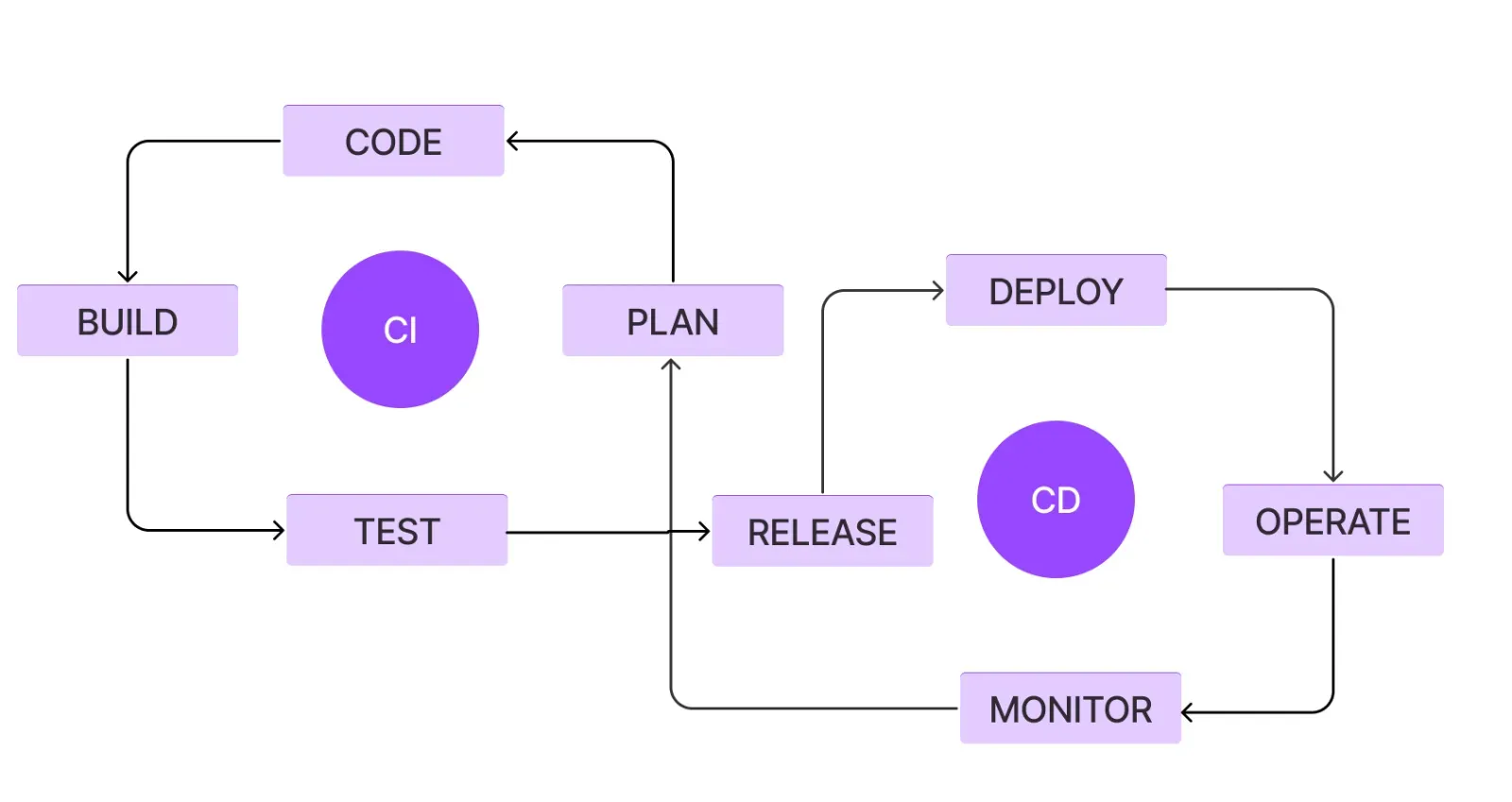Role of Functional Testing in DevOps and Agile
Functional testing plays a vital role in DevOps and Agile developmental approaches to help deliver quality products faster. Read on to understand how it works.

Shipping quality products fast is crucial in today’s tech landscape. You don’t want to release a product that is already months too late to the market and is no longer relevant. To avoid silos and deliver quality products fast, businesses move to DevOps and agile models. These models require continuous integration and continuous delivery, which requires continuous testing too. There are several types of software tests but functional testing plays a vital role in ensuring the development of high-performing software in a short time. Let’s first discuss what role functional testing plays in DevOps and Agile development models and what are its benefits.
How functional testing fits in DevOps
DevOps tries to deliver high-quality software products more quickly and efficiently. The goal is to bring development and operations teams together and work seamlessly throughout the entire software development lifecycle. The developed software is tested, merged, implemented, and monitored continuously.
Testing in DevOps is quite frequent at each stage. Automated performance testing is integral to maintaining software quality throughout the DevOps continuous integration and continuous delivery pipeline. In the development phase, unit tests are conducted to validate code quality, while developers regularly integrate code changes into the repository. Regression testing ensures that these changes uphold existing software functionality. Subsequently, integration testing verifies the seamless integration of all components during ongoing integration. Finally, comprehensive system testing evaluates software effectiveness. By integrating functional testing within the DevOps framework, businesses can reliably deliver high-quality software, that aligns with their objectives.
How functional testing fits in Agile
Agile focuses on iterative development and evolvement of the solutions throughout the SDLC. In traditional test models like the waterfall model, software development and testing follow a sequential approach, typically beginning testing only after the development phase is complete. However, in the agile methodology, development and testing occur concurrently in iterative cycles known as sprints, with features deployed at the end of each cycle.
Within an agile environment, developers continuously enhance the software by adding new features or making code upgrades, while testers concurrently conduct functional software testing. If changes are made to the software, a regression test is performed to verify that existing software performance remains unaffected.
Functional testing encompasses various types such as smoke, sanity, unit, and component testing. These tests expedite the software testing process, facilitating early identification of errors, enhancing collaboration among team members, and ultimately saving time. This dynamic approach fosters efficient software development, ensuring high-quality deliverables in an agile environment.
Different functional testing approaches in DevOps and agile
DevOps and agile require testing and can alternatively use different methodologies for ensuring the quality and functionality of the software. Three prominent approaches include Acceptance Test-Driven Development (ATDD), Behavior-Driven Development (BDD), and Exploratory Testing. Each method offers unique strategies for validating software performance and aligning development with user needs. These testing practices, integrated into Agile workflows, contribute to the overall success of software development projects by ensuring continuous improvement and customer satisfaction. Here is a detailed account of how these testing methods work.
Acceptance Test-Driven Development (ATDD)
Acceptance Test-Driven Development (ATDD) is a software development approach that defines acceptance criteria before coding begins. The development team collaborates with stakeholders to create these criteria. These acceptance criteria represent the desired behavior of the software from the perspective of the end-user or customer. Once the acceptance criteria are established, automated acceptance tests are written to verify that the software meets these criteria.
Key Principles
By focusing on user expectations early in the development process, ATDD helps deliver higher-quality software that better aligns with customer needs. The key principles of Acceptance Test-Driven Development (ATDD) include:
Collaboration: ATDD emphasizes collaboration among developers, testers, and stakeholders to define acceptance criteria that accurately reflect user expectations.
Early Specification: Acceptance criteria are specified early in the development process, before coding begins, ensuring a clear understanding of the software requirements from the outset.
Automation: Acceptance tests are automated to validate that the software meets the specified acceptance criteria, allowing for quick and efficient verification of functionality.
Shared Understanding: ATDD fosters a shared understanding of project requirements among all team members, reducing the risk of misinterpretation and ensuring alignment with customer needs.
Continuous Feedback: ATDD promotes continuous feedback loops between team members, enabling quick adjustments to be made based on test results and changing requirements.

Behavior-Driven Development (BDD)
BDD is a technique in software development that focuses on bridging the gap between business stakeholders and technical teams. It focuses on defining the behavior of a system through scenarios written in a natural language format. These scenarios, often expressed using a syntax called "Given-When-Then," describe the expected behavior of the system from the perspective of different stakeholders, such as users or administrators.
Key Principles:
The key principles of Behaviour-Driven Development include:
Natural Language Specifications: BDT encourages the use of natural language to describe the expected behavior of the system. This involves writing test scenarios in a human-readable format using keywords like "Given," "When," and "Then" to describe the preconditions, actions, and expected outcomes.
Rapid Iterations: BDD promotes working in rapid iterations to continuously break down user problems into small pieces that can quickly flow through the development process.
Automated Documentation: BDD focuses on producing structured documentation that can be automated and checked against the system’s behavior, ensuring alignment with user needs.
Discovery, Formulation, Automation: BDD follows a three-step iterative process: Discovery involves identifying valuable examples from user stories. Formulation translates these examples into structured documentation, and Automation guides development by automating examples as tests.
Exploratory Testing
Exploratory testing emphasizes the tester's creativity, intuition, and learning while interacting with the software under test. Unlike scripted testing, where test cases are predefined, exploratory testing involves simultaneous test design and execution. The tester explores the software, learns about its behavior, identifies potential issues, and provides real-time feedback.
Key Principles:
Key principles of exploratory testing include:
Adaptability: Testers must be flexible and adaptable, adjusting their testing approach based on the evolving understanding of the software and its requirements. This allows testers to explore different aspects of the software based on their observations and insights.
Creativity: Exploratory testing encourages testers to think creatively and unconventionally to uncover hidden defects or potential issues that may not be apparent through traditional testing methods. Testers may try unusual combinations of inputs, explore edge cases, or simulate real-world scenarios to provoke unexpected behavior.
Continuous Learning: Testers engage in continuous learning throughout the testing process, gaining insights into the software's behavior, architecture, and potential areas of risk. This learning process helps testers refine their testing strategy and identify new test scenarios as they explore the software further.
Risk Focus: Exploratory testing prioritizes testing efforts based on the perceived risks associated with the software. Testers focus their exploration on high-risk areas, such as complex functionality, critical workflows, or areas with a history of defects, to ensure thorough coverage and effective risk mitigation.
Tester Autonomy: Exploratory testing empowers testers to take ownership of their testing activities and make independent decisions about what, how, and when to test. Testers can explore the software at their own pace, without strict adherence to predefined test scripts or procedures.
Key Benefits of Functional Testing in Agile and DevOps
Functional testing plays a crucial role in both Agile and DevOps environments, providing several key benefits:
- Functional testing helps detect defects in the software early in the development lifecycle.
- It ensures that the software meets the functional requirements and expectations of end-users.
- In Agile and DevOps environments, functional testing is integrated into the CI/CD pipelines to automate the testing process and provide rapid feedback on the quality of changes.
- Functional testing helps mitigate risks associated with software defects, usability issues, and compliance requirements.
- Functional testing helps ensure that new changes or features introduced into the software do not negatively impact existing functionality.
Automated & Continuous Testing with Codesphere
Continuous Testing executes automated tests throughout the software delivery process. It is pivotal for efficient software delivery, ensuring immediate feedback and risk mitigation throughout the development cycle. The main focus of Codesphere is to provide a streamlined and parallelized development experience. This means you get continuous and early feedback from others which also translates to more testing. That is why we heavily rely on automating the testing process. Codesphere allows you to build CI pipelines with tests automatically triggered each time a code update is pushed. This saves teams from heaps of manual effort and lags in the development process. It also helps push the software out quickly. This approach offers flexibility and adaptability throughout SDLC, especially for companies utilizing Agile and DevOps methodologies.

